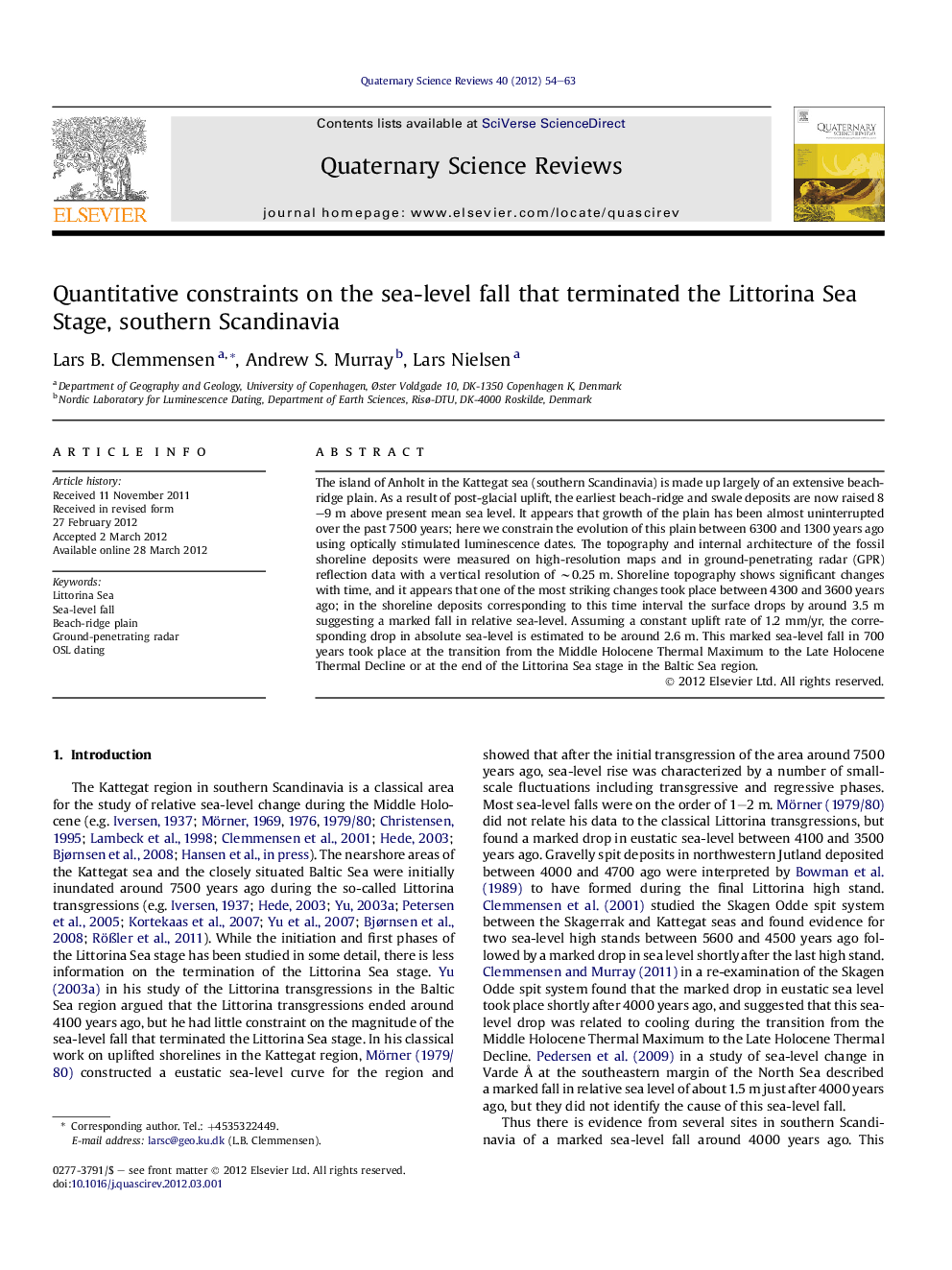| Article ID | Journal | Published Year | Pages | File Type |
|---|---|---|---|---|
| 4736463 | Quaternary Science Reviews | 2012 | 10 Pages |
The island of Anholt in the Kattegat sea (southern Scandinavia) is made up largely of an extensive beach-ridge plain. As a result of post-glacial uplift, the earliest beach-ridge and swale deposits are now raised 8–9 m above present mean sea level. It appears that growth of the plain has been almost uninterrupted over the past 7500 years; here we constrain the evolution of this plain between 6300 and 1300 years ago using optically stimulated luminescence dates. The topography and internal architecture of the fossil shoreline deposits were measured on high-resolution maps and in ground-penetrating radar (GPR) reflection data with a vertical resolution of ∼0.25 m. Shoreline topography shows significant changes with time, and it appears that one of the most striking changes took place between 4300 and 3600 years ago; in the shoreline deposits corresponding to this time interval the surface drops by around 3.5 m suggesting a marked fall in relative sea-level. Assuming a constant uplift rate of 1.2 mm/yr, the corresponding drop in absolute sea-level is estimated to be around 2.6 m. This marked sea-level fall in 700 years took place at the transition from the Middle Holocene Thermal Maximum to the Late Holocene Thermal Decline or at the end of the Littorina Sea stage in the Baltic Sea region.
► A high-resolution record of beach-ridge plain topography and sea-level change. ► Sea level in the Kattegat sea drops markedly between 4300 and 3600 years ago. ► Marked sea-level fall takes place at the beginning of the Holocene Thermal decline. ► Marked sea-level fall terminates the Littorina Sea Stage in the Kattegat sea.
